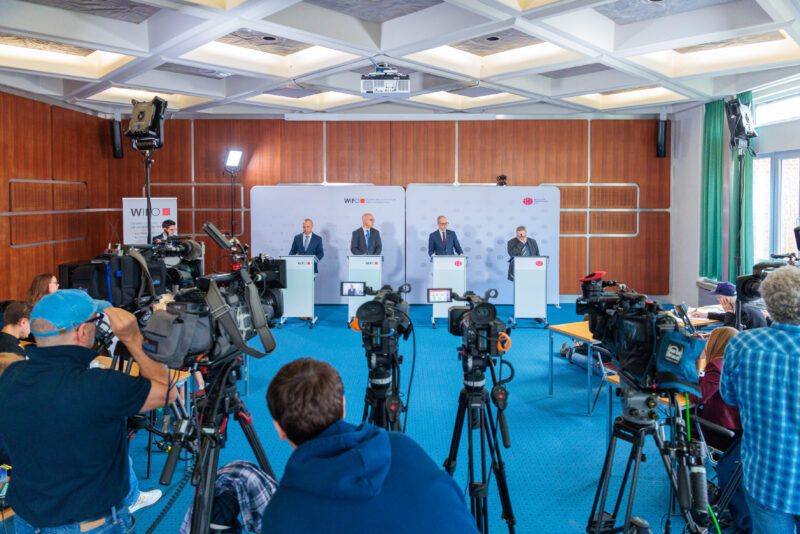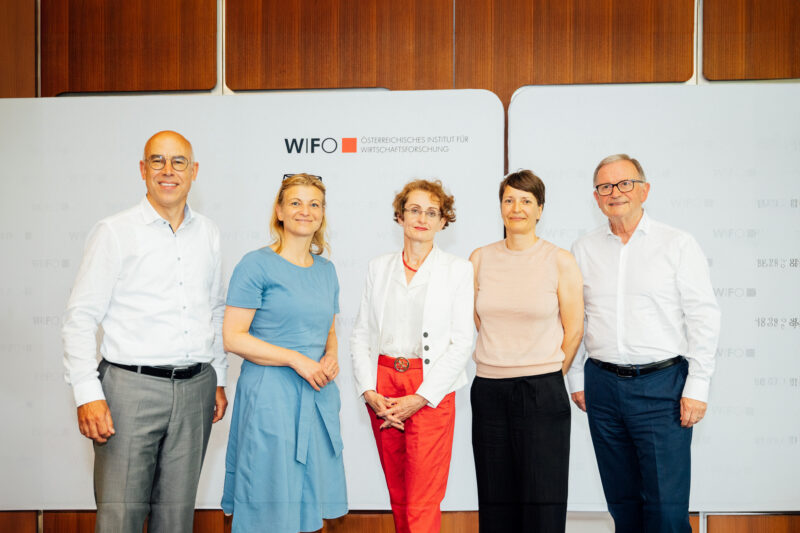
Worldwide Economic Downturn as a Result of the COVID-19 Pandemic
Consumption as well as accommodation and food service activities, transportation, wholesale and retail trade, repair of motor vehicles and motorcycles and other service activities were particularly affected. After rising strongly within two weeks at the end of March, unemployment continued to rise in April, albeit at a slower pace. Inflation fell in March.
The effects of the COVID-19 pandemic and the measures taken to contain it had dramatic consequences worldwide. Widely scattered across countries and sectors, economic indicators deteriorated within a few weeks.
With the lack of demand as a result of the lockdown, commodity prices also fell. In April, the HWWI Commodity Price Index, which includes food and beverages as well as energy and industrial raw materials, was about 50 percent below the level at the beginning of the year (in both euro and dollar terms). The effects of the restrictive measures implemented in the USA and Europe from mid-March onwards were so strong that economic output fell significantly in many places already in the first quarter. First results show a decline in GDP in the USA (–1.2 percent), in the euro area as a whole (–3.8 percent), in France (–5.8 percent), Italy (–4.7 percent) and Spain (–5.2 percent, compared with the previous period in each case).
In April, confidence indicators fell rapidly, in some cases to levels not seen since the trough of the 2008-09 crisis. In the USA, the Conference Board's Consumer Confidence Index recorded the sharpest decline since 2009. In the euro area, the Economic Sentiment Indicator (ESI) published by the European Commission fell to levels similar to that of the financial market crisis of 2008-09.
In Austria, the COVID-19 pandemic and the measures taken to contain it also caused GDP to fall sharply in the first quarter of 2020. According to first results, economic output remained 2.5 percent below the result of the previous quarter (key figure according to Eurostat specifications). Accommodation and food service activities, transportation, wholesale and retail trade, repair of motor vehicles and motorcycles as well as other service activities were particularly affected. Manufacturing, which had already fallen into recession in the course of 2019, also suffered losses in value added in the first quarter of 2020. Concerning construction, the previously good economic situation was interrupted by construction site closures from mid-March on.
The latest results of the April WIFO-Konjunkturtest (business cycle survey) show a deterioration in the economic assessment by Austrian companies, which is widely spread across the sectors (manufacturing, construction and services). The index of the assessment of the current situation for the overall economy turned negative by 37.1 points in April (to –28.2 points).
Concerning the labour market, the COVID-19 pandemic and the lockdown in mid-March led to a massive increase in unemployment. This slowed down in April, but the number of unemployed registered with the Public Employment Service Austria (AMS) was far above the previous year's level. Thus, the unemployment rate according to the national definition rose to an expected 12.8 percent (unadjusted). According to preliminary estimates, the number of employed persons in active dependent employment fell by 197,000 (–5.3 percent) year-on-year.
Due to the fall in fuel prices, inflation in Austria flattened out in March. According to both the consumer price index (CPI) and the harmonised consumer price index (HICP), the inflation rate was 1.6 percent (February 2.2 percent). Thus, inflation in Austria was again higher than in the euro area average (+0.7 percent).
Please contact
























